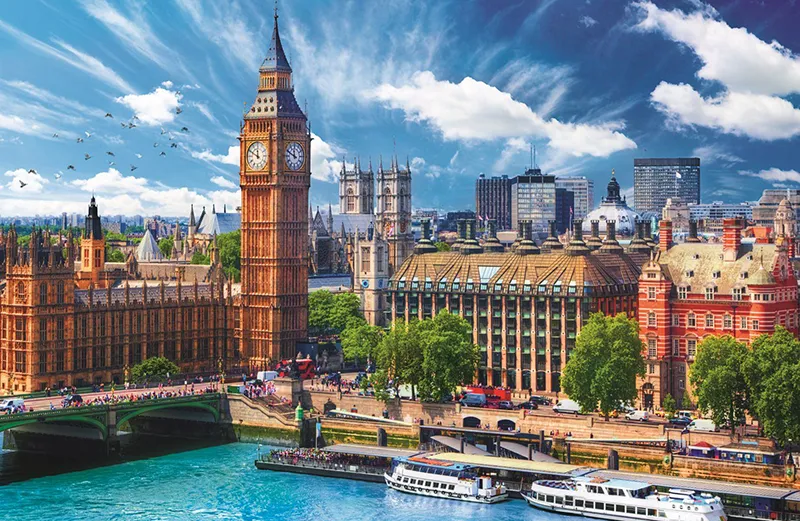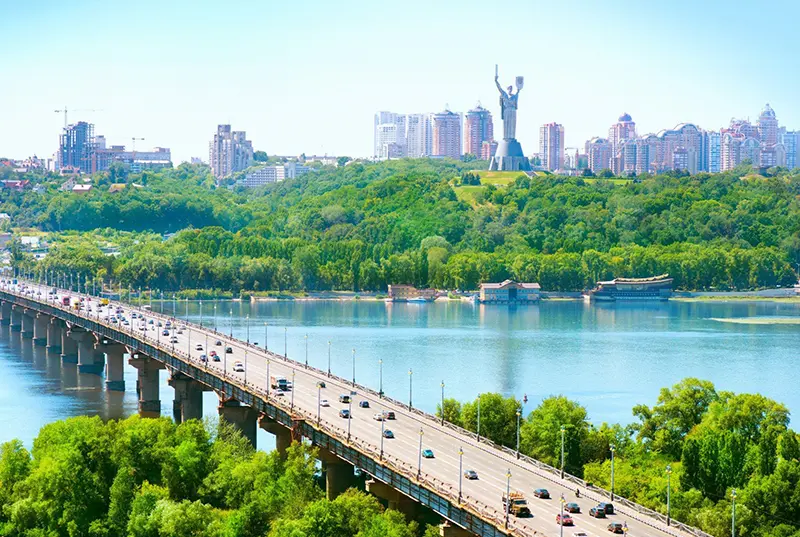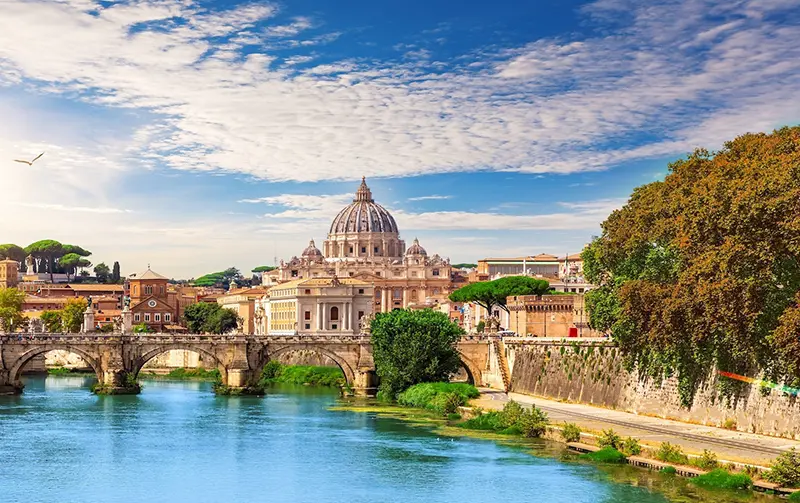The photo shows a section of the Spanish coast of the Balearic Sea in the region of Catalonia. Luxurious villas of traditionally white color nestled on the slopes of the cliffs – higher up, so that the waves of high surf do not reach.
Geography
Politically and administratively, the border of the Balearic Sea is the eastern coast of Spain (hence its name of the Catalan Sea), the south coast of France, in the south – the Spanish Balearic Islands (Mallorca, Menorca, Ibiza and Formentera), separating it from the main Mediterranean Sea. Sometimes the French island of Corsica and the Italian island of Sardinia, separated by the Strait of Bonifacio, are considered the sea boundary in the west.
The coast of the Balearic Sea in the Iberian Peninsula is formed by the spurs of the Catalan and Iberian mountains, coming almost close to the water. Thanks to the numerous rivers – Júcar, Ebro, Llobregat, Turia, Mijares – that cut through the mountains, there are wide valleys, comfortable bays and coastal lowlands. There are also small bays – Valencia, Alfaquez, San Jorge, Palma Bay, but there are no large peninsulas and islands (not counting the Balearic) in the sea. There is also a small group of Columbretes Islands off the coast of the Spanish province of Castellón.
The coast is very indented, there are many small bays, sometimes very deeply incised into the land and called calanques. Widely known are the calanques in the Marseilles area. The relief of the islands is very diverse: plains alternate with highlands and small gorges.
The depth of the sea decreases from northeast to southwest. There are many rivers flowing into the Mediterranean Sea – for example, from the Iberian Peninsula – the Ebro (the largest of all), the Turia and the Hikar – so the coastal part of the sea floor is lined with sand and silt.
The Balearic Sea is warm, it is located in the subtropical zone. The coast is dominated by Mediterranean vegetation, and the coast is sunny almost all year round, except during the rainy season, which falls in winter. Downpours are strong, but short-lived. The sun shines for 11 hours a day in summer. The average annual temperature is +18 ° C on the islands.
The Balearic Sea is a marginal sea in southern Europe, on the eastern coast of the Iberian Peninsula.
History
Ever since the Phoenicians settled on its shores, merchants have been trading with the Mediterranean.
The Balearic Sea has been exploited by man since ancient times, supplying the local population with fish and seafood. First the Phoenicians and then the Greeks founded city-states here. The Romans reached the Iberian Peninsula also by water – by the Balearic Sea.
Piracy, which flourished for more than two thousand years, has left its mark on the history of the Balearic waters. This was due as much to the important trade routes and wealthy merchant ships on the sea as to the many secluded coves that provided shelter to the corsairs. It is difficult to identify any particular people for whom this trade was traditional: merchant ships were plundered by all nationalities.
This area of the Mediterranean is a place of intense shipping. There is a large-scale commercial fishing, mainly mackerel, herring, anchovy, tuna, mullet and horse mackerel, and octopus, shark, squid, crab, lobster are caught.
The resort sea
The largest ports of the Balearic Sea are the Spanish Barcelona, Valencia and Palma de Mallorca, and the French Marseille and Toulon (if you count the French coast as part of the Balearic Sea).
The Balearic region is home to numerous world-famous resorts on the islands and coasts of the Iberian Peninsula. They are served by many local ferries and boats.
Ibiza and the resorts of Menorca, Formentera, Mallorca, Cabrera and Dragonera are known for their nightlife, festivals and beaches, and are particularly popular with young people. Barcelona is world-renowned for its unique architecture and Valencia for its ancient history.
The environmental situation in the Balearic region is generally favorable, but some species of marine animals are threatened with extinction.
General Information
- Location: northwest of the Mediterranean Sea.
- Peninsulas: Iberian.
- Islands: Balearic.
- The following rivers flow into it: Ebro, Turia, Jicar.
- Largest ports: Barcelona (Spain) – 1,608,746 people (2016), Marseille – 858,120 people (2014), Valencia – 790,201 people, Palma de Mallorca (Spain) – 402,949 people (2016), Toulon (France) – 165,584 people (2014).
- Languages: Spanish, French, Italian, Arabic, Valencian, Catalan, Corsican, Sardinian.
- Ethnic composition: French, Spaniards, Italians, Arabs, Catalans, Sardinians, Corsicans.
- Religions: Catholicism, Islam.
- Currency: euro.
- Area: 86,000 km2.
- Maximum depth: 2132 m.
- Average depth: 767 m.
- Salinity (at surface): 36-38%0.
- Distance: 337 km from Barcelona (Spain) to Marseille (France), 518 km from Barcelona (Spain) to Sardinia (Italy).
Climate and weather
- Subtropical maritime.
- The hottest and driest period is summer.
- The average temperature in January: +12°C.
- Average temperature in July: +25°C.
- Average water temperature (at the surface): February +12°C, August +25°C.
- Average annual rainfall: 450 mm.
- Relative humidity: 75%.
Economics
- Shipping industry.
- Fishing.
- Water tourism (boats and yachts).
Attractions
Natural
- Columbretes Island Nature Reserves (1988) and Cape San Antonio (1993)
- The Ebro River Delta Natural Parks (1983), Garraf (1986), Albufera (1986) and Sierra de Irta (2002)
- The Costa de Valencia, Costa del Azaar, Costa Dorada and Costa Brava
- The De La Nao, Tortosa, Oropesa and the Balaguer cliff
City of Barcelona
- Santa Maria de Pedralbes Monastery (1326)
- Santa Maria dal Mar Church (1383)
- Cathedral (built at the beginning of the 14th century, restored, 1975-1981)
- Palace of the Government of Catalonia (XV, XVIIth centuries)
- Montjuïc castle (1694)
- Opera theater Liceu (1847)
- Casa Batlló (1877)
- Sagrada Familia (Sagrade Familia, start of construction 1883)
- Monument to Christopher Columbus (1888)
- Palau del Guell (1889)
- Casa Mila (1910)
- The National Museum of Art of Catalonia (building of the National Palace, built in 1929)
- Pedralbes Royal Palace (first half of the XXth century)
Valencia
- Cathedral (second half of XIII century)
- Church of St. Johns (XIII, XVIII c.)
- Towers de Quart (1460)
- Generalidad Palace (15th-16th centuries)
- The Silk Exchange (15th-16th centuries)
- St. Michael’s Monastery (16th-XVIIth centuries)
- The Church of St. Catalina (16th-18th centuries)
- The Museum of Fine Arts (founded in 1839).
Fun Facts
- Cape of San Antonio, on the northern coast of the province of Alicante in the south-east of Spain, is a nature reserve, which includes a coastline of about 3 km. The area contains valuable archaeological artefacts, including cave paintings, Phoenician amphorae and remains of Iberian settlements. The first human settlements in the area date back to Paleolithic times, some 30,000 years ago. Then small nomadic tribes inhabited the caves and hills facing the sea at Cape San Antonio.
- The Columbretes Islands are an archipelago off the coast of Valencia. They owe their name to the Romans: they gave the islands the name Colubraria, from the Latin word for snake. Indeed, even today there are a great many of them on the islands. And up until the XII century, no one dared to live here, until the islands were taken over by pirates hiding from the law. But even the pirates left the islands, and until the middle of the XIX century, these places were uninhabited at all, until it installed a lighthouse. But in 1975, it was replaced by an automatic, and people left the islands again. Now it is a nature reserve, where the same snakes, falcons, gulls, terns and petrels live.
- Peñíscola – a town in the province of Castellón located on a 67-meter cliff that rises directly out of the sea and is connected to the land only by a narrow strip of land. The name of the town and translates from Latin as “peninsula”. The Spanish call this town the Valencian Gibraltar: because of its location, and also because it has its own mighty fortress – the Templar Castle XIII-XIV centuries. and a large lighthouse.
- At its confluence with the Mediterranean the Ebro River divides into many branches and forms a vast delta of over 300 km2. The area is a nesting area for migratory birds and in 1986 was declared a protected area, becoming one of the largest nature reserves in Catalonia. Local inhabitants include pink flamingos and herons.
- The name Costa del Açaar means “Coast of Orange Flowers” in Spanish. It got this name because of the many orange groves, which appeared here during Arab rule.




